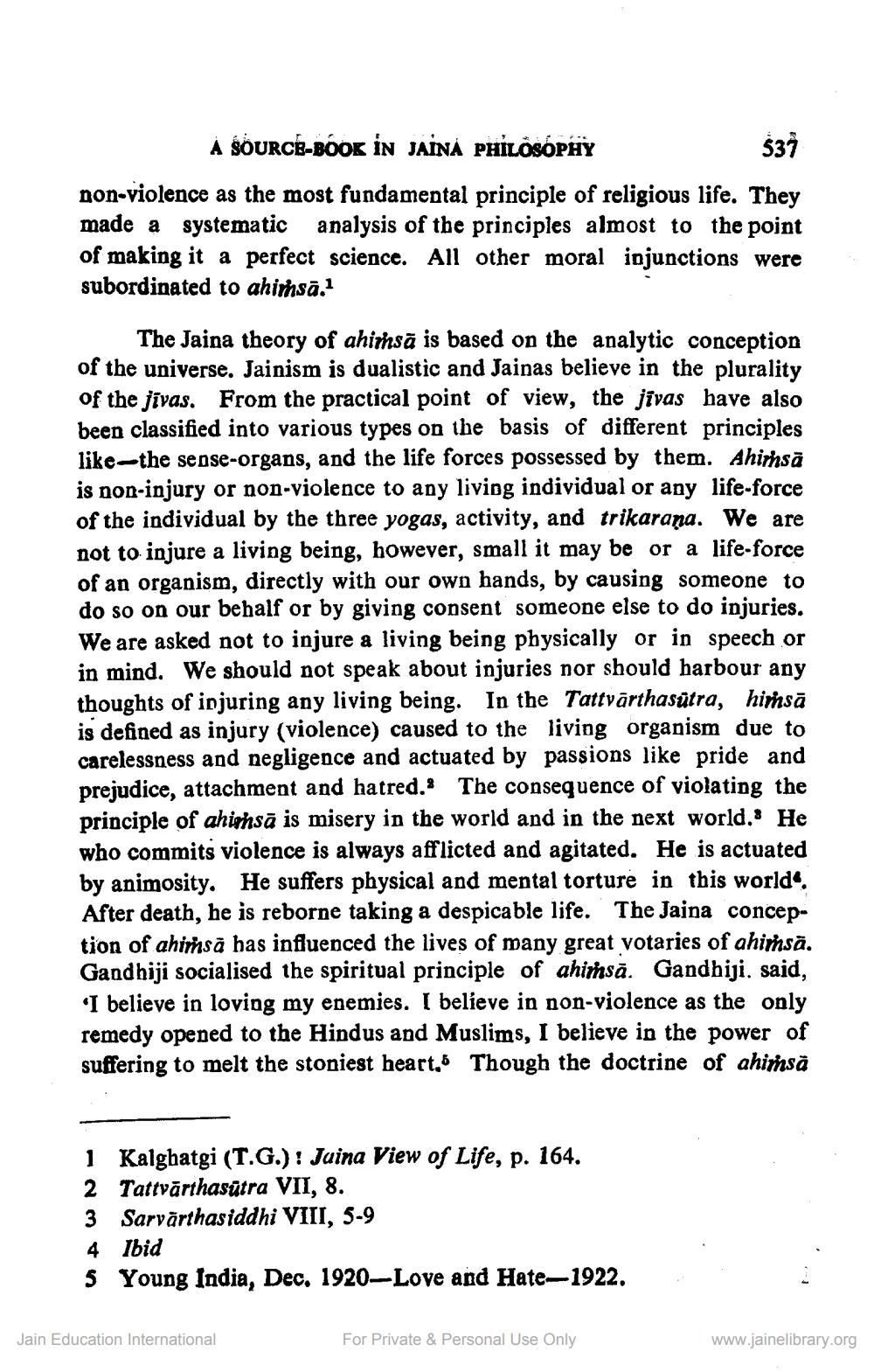________________
A SOURCE-BOOK IN JAINA PHILOSOPHY
537
non-violence as the most fundamental principle of religious life. They made a systematic analysis of the principles almost to the point of making it a perfect science. All other moral injunctions were subordinated to ahimsā.1
The Jaina theory of ahimsa is based on the analytic conception of the universe. Jainism is dualistic and Jainas believe in the plurality of the jivas. From the practical point of view, the jivas have also been classified into various types on the basis of different principles like the sense-organs, and the life forces possessed by them. Ahimsa is non-injury or non-violence to any living individual or any life-force of the individual by the three yogas, activity, and trikarana. We are not to injure a living being, however, small it may be or a life-force of an organism, directly with our own hands, by causing someone to do so on our behalf or by giving consent someone else to do injuries. We are asked not to injure a living being physically or in speech or in mind. We should not speak about injuries nor should harbour any thoughts of injuring any living being. In the Tattvärthasutra, himsā is defined as injury (violence) caused to the living organism due to carelessness and negligence and actuated by passions like pride and prejudice, attachment and hatred. The consequence of violating the principle of ahighsā is misery in the world and in the next world. He who commits violence is always afflicted and agitated. He is actuated by animosity. He suffers physical and mental torture in this world". After death, he is reborne taking a despicable life. The Jaina conception of ahimsa has influenced the lives of many great votaries of ahiṁsä. Gandhiji socialised the spiritual principle of ahimsa. Gandhiji. said, 'I believe in loving my enemies. I believe in non-violence as the only remedy opened to the Hindus and Muslims, I believe in the power of suffering to melt the stoniest heart." Though the doctrine of ahimsa
1 Kalghatgi (T.G.): Jaina View of Life, p. 164.
2 Tattvärthasūtra VII, 8.
3 Sarvärthasiddhi VIII, 5-9
4 Ibid
5 Young India, Dec. 1920-Love and Hate-1922.
Jain Education International
For Private & Personal Use Only
www.jainelibrary.org




